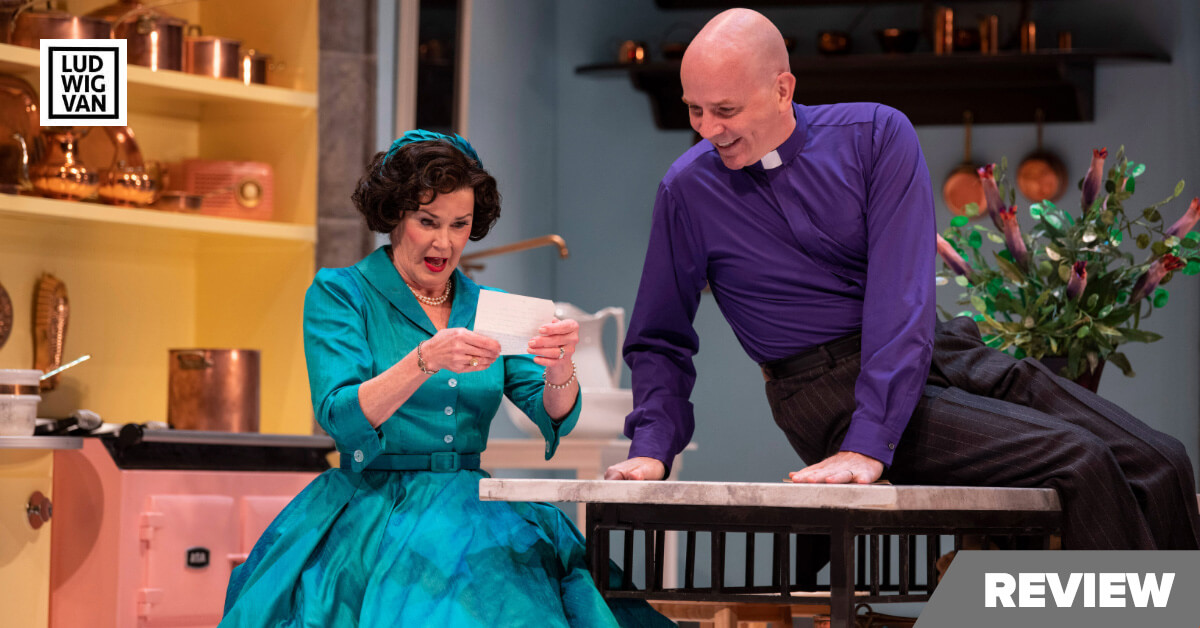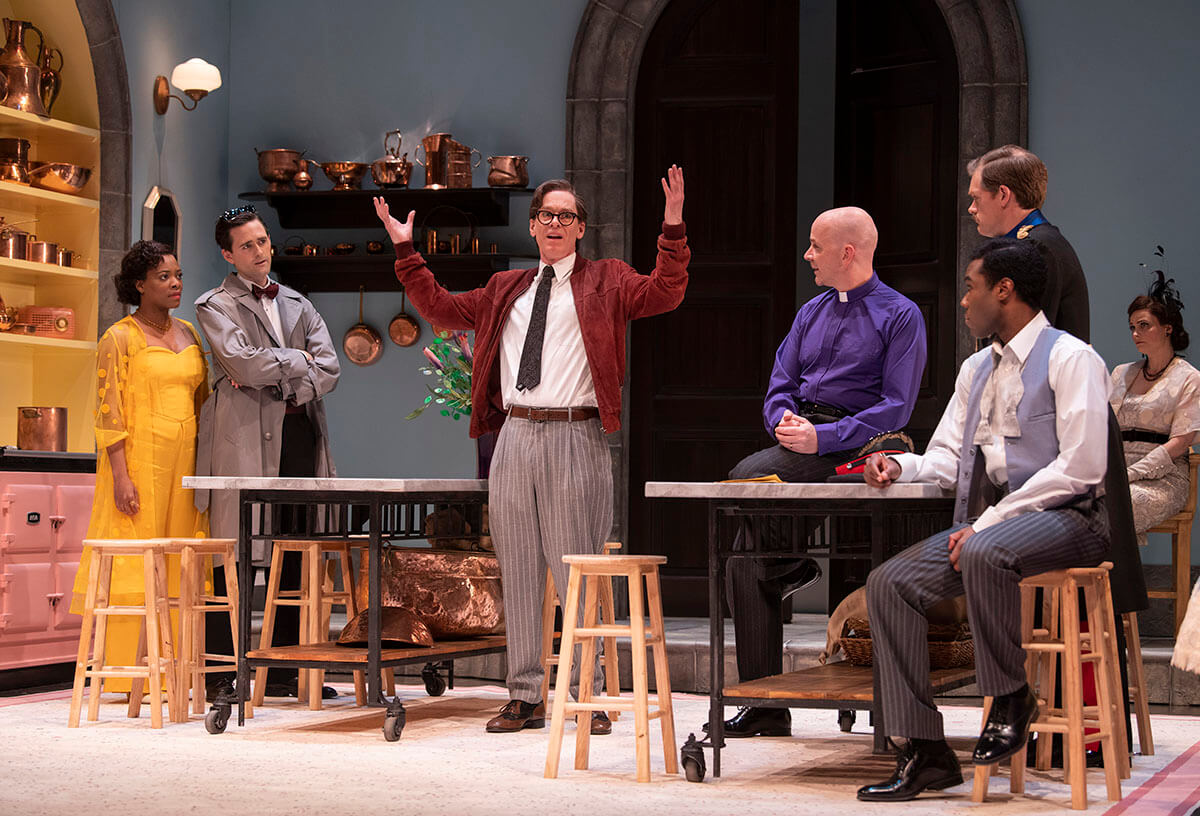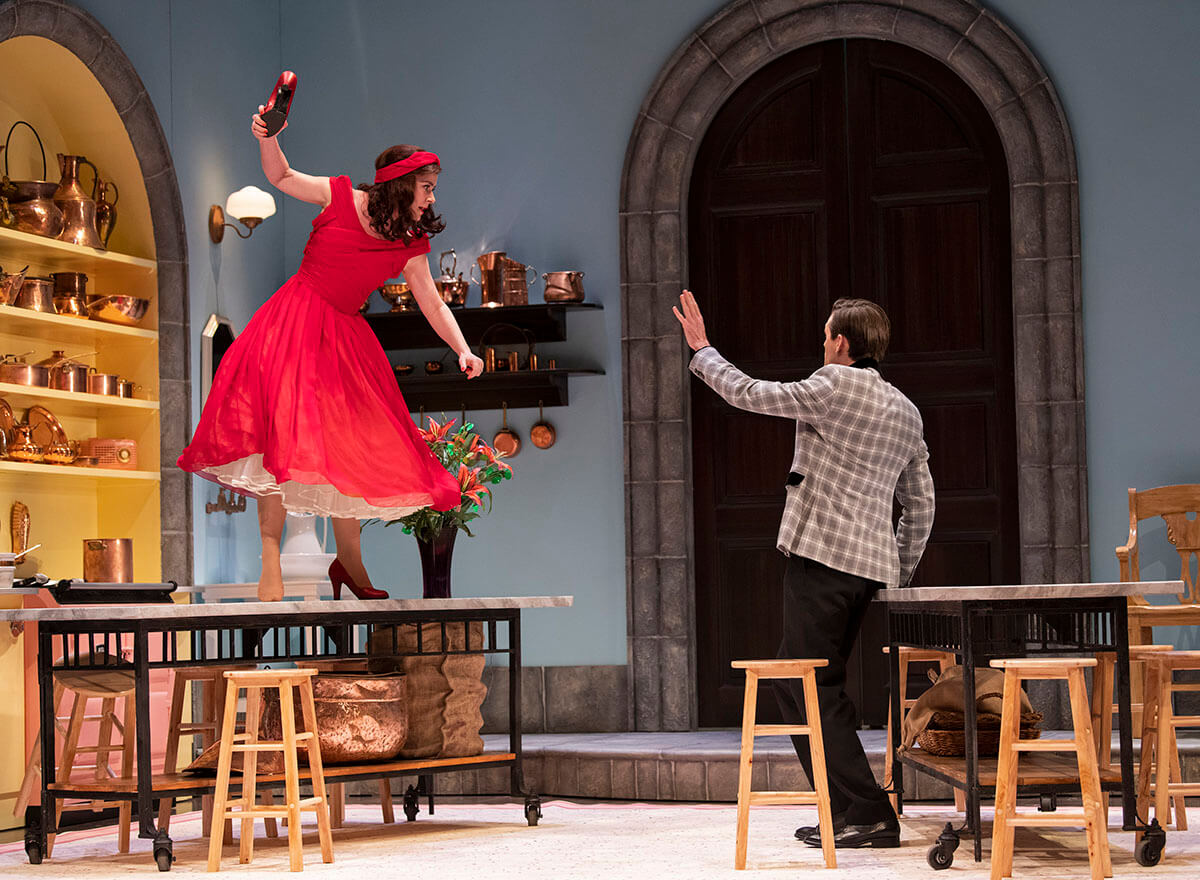
Shaw Festival 2019/ Getting Married by George Bernard Shaw, directed by Tanja Jacobs, Royal George Theatre, May 25 to Oct. 13. Tickets available at shawfest.com.
Getting Married (1908) is classified in the Shaw canon as a conversation play. Fortunately, the Shaw ensemble is mostly up to the task of coping with the playwright’s torrent of words. Act One is scintillating in its conflicting ideas, but even ardent Shaw-ites admit that Act Two falters. Nonetheless, after this production of Getting Married, you do leave the theatre with your head bursting with Shavian arguments.
Shaw himself called Getting Married a disquisitory play, the meaning being a very long and elaborate discussion on a particular topic. In other words, Getting Married is far more than mere conversation because Shaw has a lot to say on the subject of marriage. The play features twelve characters who represent different perspectives on the institution in question. They’ve gathered together to celebrate a wedding. Most are members of the extended family. Shaw opted to construct the play according to the Greek unities of action, place and time. So, the topic is marriage, the setting is the kitchen of the residence of the Bishop of Chelsea, and the play begins just before the wedding and covers the time that follows.

The main characters are the three Bridgenorth brothers. Martin Happer has the thankless role of the stereotypical, blustery, arch-conservative general, and he simply does not rise above a cartoon figure. Graeme Somerville is his usual divine self as the calm but pragmatic bishop, while Steven Sutcliffe, as the recently divorced Reginald, is perhaps a touch manic, but a bright spot, nonetheless. Ben Sanders, as the vainglorious St John Hotchkiss, manages to cope with lines of great stupidity without losing his integrity. On the female side of things, Claire Jullien gives a strong performance as the dogmatic, anti-marriage Lesbia Grantham, while Marla McLean evokes the siren that is Mrs. George Collins. With some performances better than others, strong support comes from Damien Atkins, Katherine Gauthier, Cameron Grant, Andrew Lawrie, Monice Peter and Chick Reid. Lawrie as the sardonic Rev. Soames deserves special mention.
Director Tanja Jacobs opted not to use English accents, and for the most part, Shaw’s language does manage to still sound clipped and brisk. The one weakness is Damian Atkins’ greengrocer William Collins. Collins’ role is written in working-class grammar, and what would have rolled off the tongue in an English accent, sounds forced and stiff in ordinary Canadian. This is, however, not the fault of Atkins, who is a strong actor.

The setting is the 1950s, and judging from Jacobs’ program notes, she chose this time period because she is enchanted with the concept of the Festival of Britain (1951), and its promise of new things to come. Hence, it is a suitable setting for the hopes and promises that will arise out of this discussion of marriage, with Shaw emphasizing the need for more rational and liberal divorce laws. Designer Shannon Lea Doyle has provided the attractive, old-fashioned, high ceiling, gothic kitchen with big wooden tables, gleaming copperware pots and pans, and shelves of ornaments. Her period costumes are gorgeous and deliciously varied. Director Jacobs’ main concern had to be how to keep placing and replacing actors engaged in a static situation, not to mention, making sense of their comings and goings. Happily, she does nail it. Her shifting stage pictures looked relaxed and natural.
Shaw should have ended the play after Act One. There does not seem to be one aspect of marriage he has left out of the discussion, except, of course, gay and trans issues, which would have been unthinkable, even for Shaw. In this production of Getting Married, Jacobs and her cast certainly give us a lively first act with its whirligig of ideas. Act Two, with its emphasis on the allure of Mrs. George, and her trance scene, leave us to wonder, what was Shaw thinking? Nonetheless, McLean and her swains do keep our attention.
Getting Married, does not come around that often. There have only been four productions at the Shaw fest, the last in 2008, so if you like your Shaw experience to be argumentative, Getting Married is worth the visit.
LUDWIG VAN TORONTO
Want more updates on classical music and opera news and reviews? Follow us on Facebook, Instagram, or Twitter for all the latest.
- INTERVIEW | Actor Diego Matamoros Takes On Icon Walt Disney In Soulpepper Production Of Hnath Play - April 16, 2024
- SCRUTINY | Opera In Concert Shine A Light On Verdi’s Seldom Heard La Battaglia Di Legnano - April 9, 2024
- SCRUTINY | Lepage & Côté’s Hamlet Dazzles With Dance And Stagecraft Without Saying Anything New - April 5, 2024



